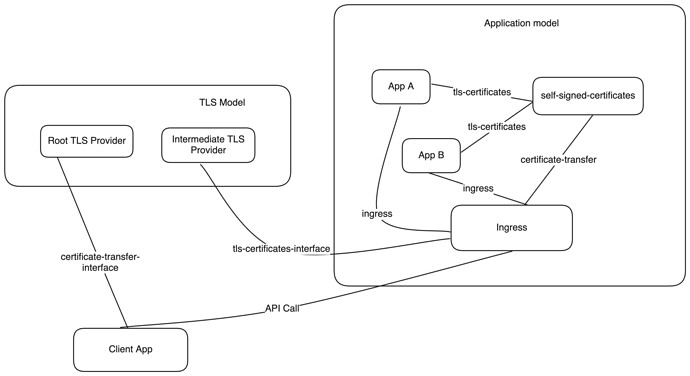Secure Client ↔ App Communication
You should deploy a TLS provider in a different model to provide certificates for applications to secure API communication.
This provider will issue the certificates used to secure traffic between clients and applications.
Supported TLS providers include:
Note: Deploying the TLS provider in a different model is not mandatory. In smaller or simpler setups, the provider and requirer applications can be in the same model.
1. Using an Ingress
In most cases, applications are accessed behind an ingress.
The ingress will:
- Integrate with the TLS provider in APP mode to secure external (client-to-ingress) communication.
- Terminate TLS traffic before passing requests to backend applications.
For internal traffic between ingress and backends, you can:
- Use a provider like self-signed-certificates.
- Integrate each backend application with the provider over the tls-certificates interface in UNIT mode.
- Integrate the ingress with the provider over the certificates-transfer interface so that the ingress trusts the CA used by the backend units.
- This ensures the ingress can validate backend-provided certificate chains that lead to the trusted CA.
2. Trust Establishment Between Clients and Applications
For TLS to work correctly:
- Clients must trust the CA that issued the application’s leaf certificate.
- Applications must present a valid chain that leads to that trusted CA.
Examples:
-
Public CA (
legowith Let’s Encrypt`):Certificates are usually trusted by default.
-
Self-signed CA (
self-signed-certificates,vault, ormanual-tls-certificates):Clients (or client applications) must explicitly trust the CA.
For Juju-integrated client applications, this is achieved by integrating with the provider over the
certificates-transferinterface.
